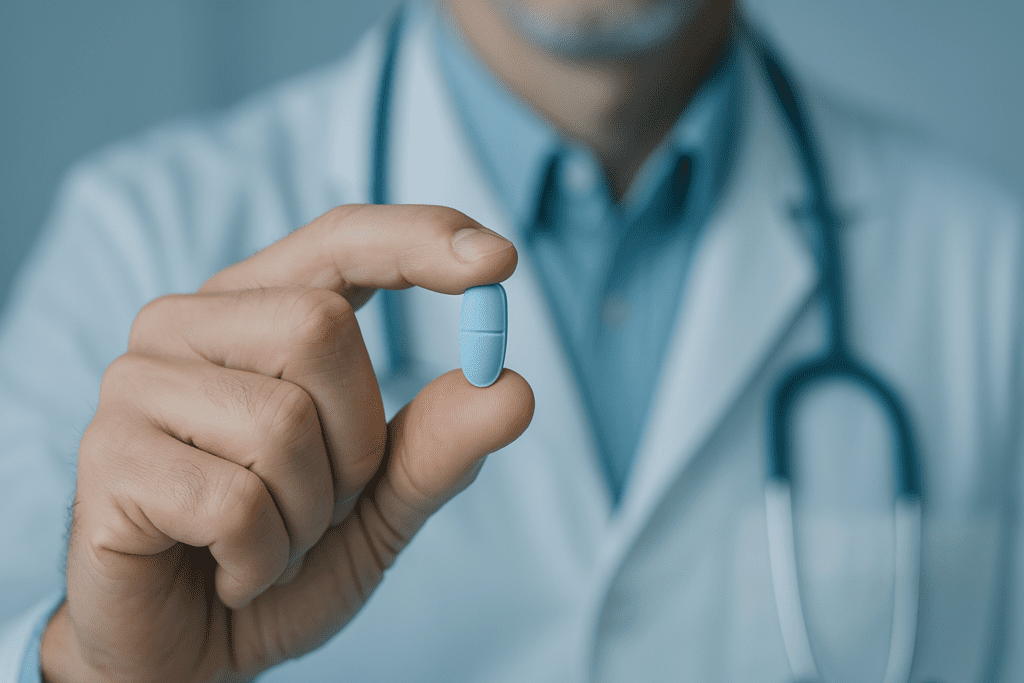Understanding the Urgency of New Therapies for Type 2 Diabetes
Type 2 diabetes continues to present a critical public health challenge worldwide. Affecting over 400 million people globally, this chronic condition is associated with long-term complications such as cardiovascular disease, kidney damage, nerve issues, and vision impairment. The current management approach—centered around blood sugar monitoring, dietary control, and traditional medications—has evolved significantly over the past decades. However, for many patients, the results remain suboptimal. Glycemic control can be difficult to maintain long-term, and complications may still arise despite diligent adherence to treatment protocols. Consequently, the demand for a new treatment for diabetes type 2 has never been more pressing.
You may also like: Breakthroughs in Current Diabetes Research: What the Latest Studies Reveal About Treatment and Prevention
Scientific progress has illuminated numerous pathways that offer new hope. Innovations in pharmacology, molecular biology, and regenerative medicine have combined to usher in a new era of therapeutic development. Today, researchers are not just refining existing drug classes but introducing novel mechanisms of action that aim to tackle the disease at its root. These developments are not only yielding new diabetic meds but are also helping redefine the very architecture of type 2 diabetes treatment itself.
New Pill for Type 2 Diabetes: Redefining Oral Therapies
Oral medications have long been the mainstay for type 2 diabetes, but recent advancements have brought forth a new pill for type 2 diabetes that is transforming therapeutic expectations. Among the most notable innovations are dual and triple agonists that simultaneously target multiple hormonal pathways to improve glucose regulation. Unlike older drugs that focused narrowly on insulin sensitivity or secretion, these newer compounds enhance glucose uptake, reduce liver glucose production, and regulate appetite all at once.
One example is the rise of glucagon-like peptide-1 (GLP-1) receptor agonists and their combinations with glucose-dependent insulinotropic polypeptide (GIP) agonists. These combinations, which form the basis of several new diabetes pills in development, promise improved glycemic control with fewer side effects. The convenience of oral administration also means enhanced adherence compared to injectable formulations, further improving outcomes.
Another class gaining traction involves SGLT2 inhibitors, which encourage the kidneys to excrete excess glucose. Recent iterations of these medications have been fine-tuned for better safety profiles, reducing the risk of infections and dehydration. The introduction of such new diabetic medicine offers fresh hope for patients seeking alternatives to complex insulin regimens or those unresponsive to existing therapies.

The Pipeline of New Diabetes Medication: Where Innovation Meets Experience
The landscape of pharmaceutical research is buzzing with activity, as dozens of new diabetes medications progress through clinical trials. These latest diabetes drugs aim to provide more than just glycemic control. Increasingly, their designs incorporate cardiovascular and renal protective effects, reflecting a broader understanding of type 2 diabetes as a systemic condition.
For example, tirzepatide—a novel GIP and GLP-1 dual receptor agonist—has shown remarkable efficacy not just in lowering blood glucose but also in facilitating significant weight loss, a major comorbidity in type 2 diabetes. This compound is emblematic of the latest medicine for diabetes, which embraces multi-functionality rather than single-target action. Researchers are increasingly focused on these multitasking molecules that go beyond glucose to address inflammation, insulin resistance, and fat metabolism concurrently.
Additionally, investigational therapies using gut hormone analogs and small molecule modulators are showing promise. These compounds work in concert with the body’s endocrine and metabolic systems to restore homeostasis. As such, they represent not only a new diabetes treatment but also a new philosophy in chronic disease management—one that respects the interconnectedness of metabolic, hormonal, and cardiovascular systems.
New Diabetic Meds and the Shift Toward Personalized Care
One of the most exciting shifts in type 2 diabetes care is the rise of personalized medicine. Gone are the days of a one-size-fits-all prescription model. Today, genomics, microbiome research, and wearable technologies are converging to inform highly individualized treatment strategies. This progress is fueling the development of new diabetic meds tailored to the specific genetic and physiological profiles of patients.
For instance, new type 2 diabetes medications are being tested in populations segmented by insulin resistance patterns, beta-cell function, and even gut microbiota composition. These drugs may act differently depending on a patient’s inflammatory biomarkers or epigenetic markers, ushering in a new era of targeted intervention. As the newest type 2 diabetes medications gain FDA approval, clinicians are increasingly able to match patients with the treatments most likely to yield optimal outcomes.
The data-driven aspect of this movement is equally important. Continuous glucose monitors (CGMs), artificial intelligence, and machine learning models are being used to identify real-time patterns in glycemic fluctuations. By combining such technologies with the latest diabetes medication, healthcare providers can develop more dynamic and responsive care plans that evolve as the patient’s condition changes.
The Promise of New Therapies for Type 2 Diabetes Beyond Medication
While pharmaceutical innovation is vital, the most forward-thinking approaches extend beyond drugs. Some of the most compelling new therapies for type 2 diabetes include regenerative medicine techniques, such as beta-cell replacement using stem cells or gene editing. Though still in experimental phases, these methods aim to restore the body’s own insulin production capacity, potentially offering a long-term or even permanent solution.
Similarly, metabolic surgery is gaining renewed interest, not just as a weight loss tool but as a metabolic reset capable of reversing type 2 diabetes in certain patients. Recent research shows that procedures like gastric bypass can alter gut hormones and microbial populations in ways that dramatically improve insulin sensitivity and glucose tolerance. For some, this may represent a new cure for diabetes type 2, though further long-term studies are needed to validate such claims definitively.
Lifestyle interventions, enhanced by digital coaching and precision nutrition, also form part of the newest diabetes treatment landscape. These interventions now go far beyond basic advice, incorporating DNA analysis, microbiome profiling, and real-time feedback to customize plans. In tandem with new drugs for type 2 diabetes, these tools form an integrated approach that addresses the root causes rather than merely the symptoms of the disease.

Evaluating the Safety and Efficacy of New Diabetes Drugs
As with all innovations in medicine, the emergence of new diabetes drugs must be carefully scrutinized for both safety and effectiveness. Clinical trials are the gold standard for evaluating these factors, typically progressing through multiple phases before a medication can reach the market. The newest diabetes medication candidates are subjected to rigorous testing involving thousands of patients, covering diverse demographics and comorbidities.
Pharmacovigilance remains a central component of this process, even after drugs are approved. Post-market surveillance helps to detect rare or long-term side effects that may not surface during clinical trials. Importantly, the regulatory environment has evolved to accommodate the complexity of new dm medications, particularly those using biological agents or gene-modifying techniques. Regulators now demand not only statistical efficacy but also real-world performance metrics.
For patients, the reassurance of such oversight is critical. As new medicines for diabetes type 2 become more sophisticated, it is essential that they meet the highest standards for safety, tolerability, and ease of use. Fortunately, many of the newest diabetes drugs are showing impressive results in these areas, offering both clinicians and patients a broader, safer array of treatment choices.
Global Perspectives and Accessibility Challenges in New Diabetes Treatment
The rollout of any new treatment for diabetes 2 is never uniform across the globe. Access to the latest diabetes drugs is often determined by a country’s healthcare infrastructure, insurance systems, and regulatory approval timelines. In high-income nations, patients may have access to cutting-edge therapies within months of approval. However, in low- and middle-income countries, it can take years before such treatments become available—if they do at all.
This disparity has prompted calls for more equitable distribution strategies and pricing models. Public-private partnerships are being explored to bridge the access gap and deliver new diabetes medication to underserved populations. Generic manufacturing, tiered pricing, and international health initiatives are part of ongoing efforts to make new diabetic medicine accessible on a global scale.
Even within affluent nations, affordability remains a major issue. Many of the newest type 2 diabetes medications come with high price tags, limiting accessibility for uninsured or underinsured patients. Addressing these challenges requires coordinated action across governments, pharmaceutical companies, and patient advocacy groups to ensure that innovation does not come at the expense of equity.
Future Directions: Integrating New Diabetes Pill Innovations with Holistic Care
As the field continues to evolve, the integration of new diabetes pill technologies with holistic models of care will likely become the norm. Multi-disciplinary teams including endocrinologists, nutritionists, behavioral therapists, and data analysts are already collaborating to provide comprehensive care. The goal is to embed new therapy for diabetes protocols within a framework that also prioritizes mental health, social support, and lifestyle education.
Telemedicine and digital health platforms are amplifying this trend, allowing for more consistent monitoring and feedback. These tools are particularly valuable in chronic disease management, where sustained engagement is key to long-term success. By pairing new diabetic meds with behavioral support systems, the potential for lasting glycemic control and complication prevention becomes increasingly attainable.
Moreover, the continuing evolution of digital therapeutics offers another layer of intervention. These software-driven treatment plans use cognitive behavioral therapy and gamified goal tracking to reinforce adherence and behavioral change. When combined with the latest diabetes treatment regimens, they hold the promise of transforming type 2 diabetes care from reactive to proactive.

Frequently Asked Questions (FAQ): Breakthroughs in Type 2 Diabetes Treatments
1. How do the newest diabetes drugs differ from older medications?
The newest diabetes drugs are built on more complex scientific frameworks than their predecessors, targeting multiple metabolic pathways rather than focusing solely on insulin resistance or secretion. For example, several new diabetic meds function as dual or triple agonists that act simultaneously on GLP-1, GIP, and glucagon receptors. This provides more balanced glucose regulation while also promoting weight loss and reducing cardiovascular risk. Unlike traditional medications, many new type 2 diabetes medications are developed with a deeper understanding of hormonal interplay, inflammation, and fat metabolism. This broader scope offers patients more comprehensive metabolic benefits and potentially fewer side effects, a major leap forward from older monotherapies.
2. Can a new pill for type 2 diabetes help delay the progression of the disease?
Yes, many new pills for type 2 diabetes aim to not only control blood sugar but also delay the progression of insulin resistance and beta-cell dysfunction. Some of the latest diabetes drugs include agents that reduce oxidative stress and systemic inflammation, both of which contribute to long-term metabolic decline. By intervening earlier in the disease process, these new diabetic medicine options may help preserve pancreatic function longer. Additionally, the incorporation of weight management properties into new medicines for diabetes type 2 supports reduced disease burden over time. Although not a definitive cure, such therapies represent a significant stride in managing the disease’s trajectory more proactively.
3. Are there any psychological benefits linked to using new diabetes medication?
Psychological health plays a crucial role in diabetes management, and newer treatments can support emotional well-being. Patients often feel overwhelmed by complex insulin regimens and frequent blood glucose monitoring, but many of the latest diabetes medication options simplify care through once-weekly dosing or oral formulations. This ease of use can reduce anxiety and treatment fatigue. Furthermore, new therapies for type 2 diabetes that also promote weight loss may improve body image and self-esteem, fostering better mental health. Improved glycemic control with new dm medications has also been associated with fewer mood fluctuations, contributing to a more stable emotional state overall.
4. How does wearable tech enhance the benefits of new type 2 diabetes meds?
Wearable technology and smart glucose monitoring systems are transforming how new type 2 diabetes meds are used in real time. These tools can track blood sugar fluctuations with high accuracy, providing actionable feedback that informs medication adjustments. For instance, pairing a new diabetes pill with a continuous glucose monitor (CGM) allows for adaptive dosing or food intake modifications based on personalized trends. Moreover, wearables can help detect nocturnal hypoglycemia or post-meal spikes, prompting timely responses and preventing complications. This synergy between technology and the newest diabetes medication options creates a more dynamic and personalized treatment ecosystem.
5. Are the newest diabetes drugs safe for people with cardiovascular disease?
Safety in patients with existing cardiovascular disease has become a top priority in the development of new drugs for type 2 diabetes. Many of the latest diabetes treatment options are designed not only to lower glucose but also to offer cardioprotective effects. For example, newer GLP-1 receptor agonists and SGLT2 inhibitors have demonstrated reduced risk of heart failure and major adverse cardiovascular events. These findings are reshaping treatment guidelines, with new type 2 diabetes medications now being recommended specifically for individuals with coexisting heart conditions. This reflects a paradigm shift from reactive to preventive care in diabetes and cardiometabolic management.
6. What role do genetics play in determining the best new diabetic meds for an individual?
Genetic profiling is increasingly being used to tailor treatments and select the most effective new diabetic meds for each patient. Certain gene variants affect how individuals respond to medications, such as how quickly they metabolize drugs or how effectively they produce insulin. New research on diabetes type 2 has identified genetic markers that can predict responsiveness to GLP-1 agonists or SGLT2 inhibitors. This level of precision allows for better matching between the patient and the therapy, reducing the trial-and-error period that can frustrate both patients and clinicians. As personalized medicine advances, new diabetes drugs will likely come with companion diagnostics for optimal customization.
7. Will new therapies for type 2 diabetes eventually eliminate the need for insulin injections?
While it’s unlikely that insulin will be completely replaced for all patients, new therapies for type 2 diabetes are minimizing the reliance on injectable insulin in many cases. The newest type 2 diabetes medications offer potent glucose-lowering effects that can delay or even eliminate the need for insulin, particularly in early to mid-stage disease. In some trials, patients have transitioned off insulin completely when starting a new diabetes pill or combination therapy. However, those with long-standing diabetes and significant beta-cell loss may still require insulin support. The goal is increasingly about individualized care—using the right tool at the right time—rather than universally moving away from insulin.
8. Are there new dm medications that focus on reversing diabetes rather than managing symptoms?
Reversal of type 2 diabetes is becoming a more realistic goal, especially with interventions that target the root causes of the disease. Some new dm medications aim to reset metabolic function rather than merely manage symptoms. For example, drugs that modulate the gut-brain axis or influence mitochondrial function are showing promise in reversing insulin resistance. Paired with lifestyle modification, these new treatment for diabetes 2 options could potentially induce remission. Additionally, certain new diabetic medicine formulations used in conjunction with intermittent fasting or bariatric procedures have demonstrated disease reversal in clinical trials. While still an emerging area, the horizon for curative therapies is expanding.
9. How are pharmaceutical companies balancing innovation with affordability in developing new diabetes drugs?
Affordability is a growing concern, particularly as the cost of the newest diabetes drugs can be prohibitive for many patients. Some pharmaceutical companies are exploring biosimilar development, tiered pricing models, and licensing agreements to make new diabetes medication more accessible. Additionally, public-private partnerships and patient advocacy initiatives are pushing for transparency in pricing and greater insurance coverage for the latest diabetes treatment options. Innovations in drug delivery, such as long-acting injectables or simplified oral formulations, may also reduce overall healthcare costs by improving adherence and reducing hospitalizations. The conversation around the cost of new type 2 diabetes meds is as dynamic as the scientific research itself.
10. What emerging trends should we watch for in future new cure for diabetes type 2 research?
One of the most exciting areas of emerging research focuses on regenerative medicine and beta-cell regeneration, which could serve as a foundational element of a true new cure for diabetes type 2. Stem cell therapy and CRISPR gene editing are being explored as ways to restore endogenous insulin production. Another trend involves the development of microbiome-targeted therapies, which seek to reshape gut flora in ways that improve insulin sensitivity and metabolic balance. The future also includes the integration of artificial intelligence into treatment algorithms, helping clinicians identify optimal new diabetic meds faster and with more precision. Finally, new research on diabetes type 2 is increasingly focusing on health disparities, with an emphasis on inclusive clinical trials and global accessibility of treatments.
Conclusion: Embracing the New Era of Type 2 Diabetes Innovation and Hope
The landscape of type 2 diabetes treatment is undergoing a seismic shift. With the introduction of each new treatment for diabetes type 2, the prospects for better outcomes, improved quality of life, and even potential remission become more realistic. Whether it’s a new pill for type 2 diabetes that tackles multiple pathways, a new cure for diabetes 2 rooted in regenerative biology, or an entirely new class of new diabetic meds guided by AI-driven personalization, the horizon is rich with opportunity.
Still, the path forward requires caution, vigilance, and collaboration. As new dm medications flood the market, medical professionals must weigh their benefits against potential risks, ensuring that innovations are both safe and effective. Equally important is the need to ensure that the newest diabetes medication options are accessible to all, regardless of geography or income.
Ultimately, the emergence of new drugs for type 2 diabetes is not merely a scientific victory but a human one. It represents the culmination of years of research, clinical insight, and patient advocacy. As we enter this new chapter, it is clear that the future of diabetes care lies not in one single solution but in a mosaic of integrated, evidence-based strategies that work together to restore health, hope, and dignity to millions. The era of fragmented care is giving way to a model defined by synergy, precision, and compassion—a true revolution in chronic disease management driven by the tireless pursuit of progress.
glucose control strategies, insulin resistance treatment, beta cell preservation, metabolic health improvement, weight loss and diabetes, gut hormone therapy, cardiometabolic care, endocrinology breakthroughs, regenerative medicine in diabetes, wearable tech for glucose tracking, precision medicine in endocrinology, digital health for chronic disease, advanced glucose monitoring, holistic diabetes care, personalized diabetes therapy, non-insulin diabetes treatments, smart diabetes management, hormone-based therapies, chronic disease innovation, pharmacogenomics and diabetes
Further Reading:
Promising new treatment strategy for type 2 diabetes
The future of diabetes treatment: Is a cure possible?
Diabetes Breakthroughs Focus on Making Daily Life Easier
Disclaimer
The information contained in this article is provided for general informational purposes only and is not intended to serve as medical, legal, or professional advice. While MedNewsPedia strives to present accurate, up-to-date, and reliable content, no warranty or guarantee, expressed or implied, is made regarding the completeness, accuracy, or adequacy of the information provided. Readers are strongly advised to seek the guidance of a qualified healthcare provider or other relevant professionals before acting on any information contained in this article. MedNewsPedia, its authors, editors, and contributors expressly disclaim any liability for any damages, losses, or consequences arising directly or indirectly from the use, interpretation, or reliance on any information presented herein. The views and opinions expressed in this article are those of the author(s) and do not necessarily reflect the official policies or positions of MedNewsPedia.


